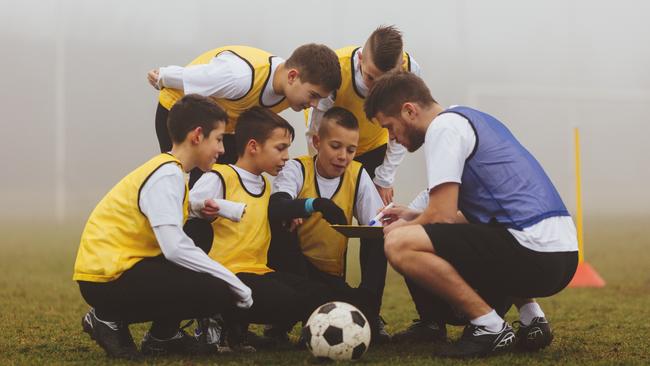
There’s so much to be gained from kids’ sport. There’s the fitness, and the setting of personal goals. I liked the mental discipline of swimming lap after lap; I’d count strokes, and calculate the proportion of my training session completed after each lap.
I loved basketball. I learnt the skills from an American teacher who arrived at our school to help with the skills shortage. It’s an intense, creative and athletic sport. And it involved constant chatter between teammates. That’s a feature I carried into my consulting business: I’m always chatting with colleagues about jobs, data, ideas for presentations.
Entire families would be swept up in the culture of kids’ sport. We travelled to “faraway” places for swimming carnivals and footy; we visited the pools and ovals in most towns between Colac and Port Fairy. We got to know each town’s sporting families by name and reputation. My mother helped with tasks like score-keeping. My father was a timekeeper at swimming meets. I would attend and intensely barrack for our side in football and netball matches played by my siblings. I loved it when we did well against bigger towns because they had so many people to pick from. (I saw demographic advantage at an early age!)
Without sport we would have remained isolated within our (Catholic) community, connecting mostly with extended family, the school and the church people. Sport expanded our social network. The footy club and the netball team required the support of volunteers to act as coaches, umpires and trainers, as well as willing parents to help with fundraising events like pie nights. And when the swimming club had a float in an Australia Day parade in the early 1970s, I sold raffle tickets door to door throughout the township. I met people I’d never met before.
There was a kibbutz-like sense of cooperation within a township that may have been divided by religious belief but was undeniably united by goodwill and the noble pursuit (a bit like a crusade) of sporting success. You might call it fellowship.
Occasionally there would be Country Championships for swimming, held in Melbourne. The coach would drive us there, and we would be billeted out to families connected to a city swim club; it was a culture shock to see how city people lived. They took showers, not baths. They had a phone. The teenage boy in the house where I stayed when I was 13 had his own room, a record collection and Levi’s jeans. We trained at a heated pool attached to a private school. I didn’t know private schools existed.
Over the years I have driven past the ovals, pools and courts I remembered from my early years. The ovals have new change rooms. The pools are now heated. Basketball and netball are now more likely to be played in indoor stadiums. It’s clear that Australian prosperity over the past half-century has delivered better facilities to most of us. But the most important aspect of our nation’s sporting life, in my view, remains the way in which it galvanises communities and instils in kids not just physical fitness but life lessons that can be carried decades into the future.




I was a sporty kid in my teenage years. And there was no shortage of sporting options in Terang. In the late ’60s and early ’70s I was a competitive swimmer. I played Aussie rules football. Later I played basketball. There were also flirtations with golf, cricket and squash. Some in our town were into cycling but that involved access to a racing bike. I’m sure these bikes weren’t like the swish bikes of today, but even so they were well beyond our reach.